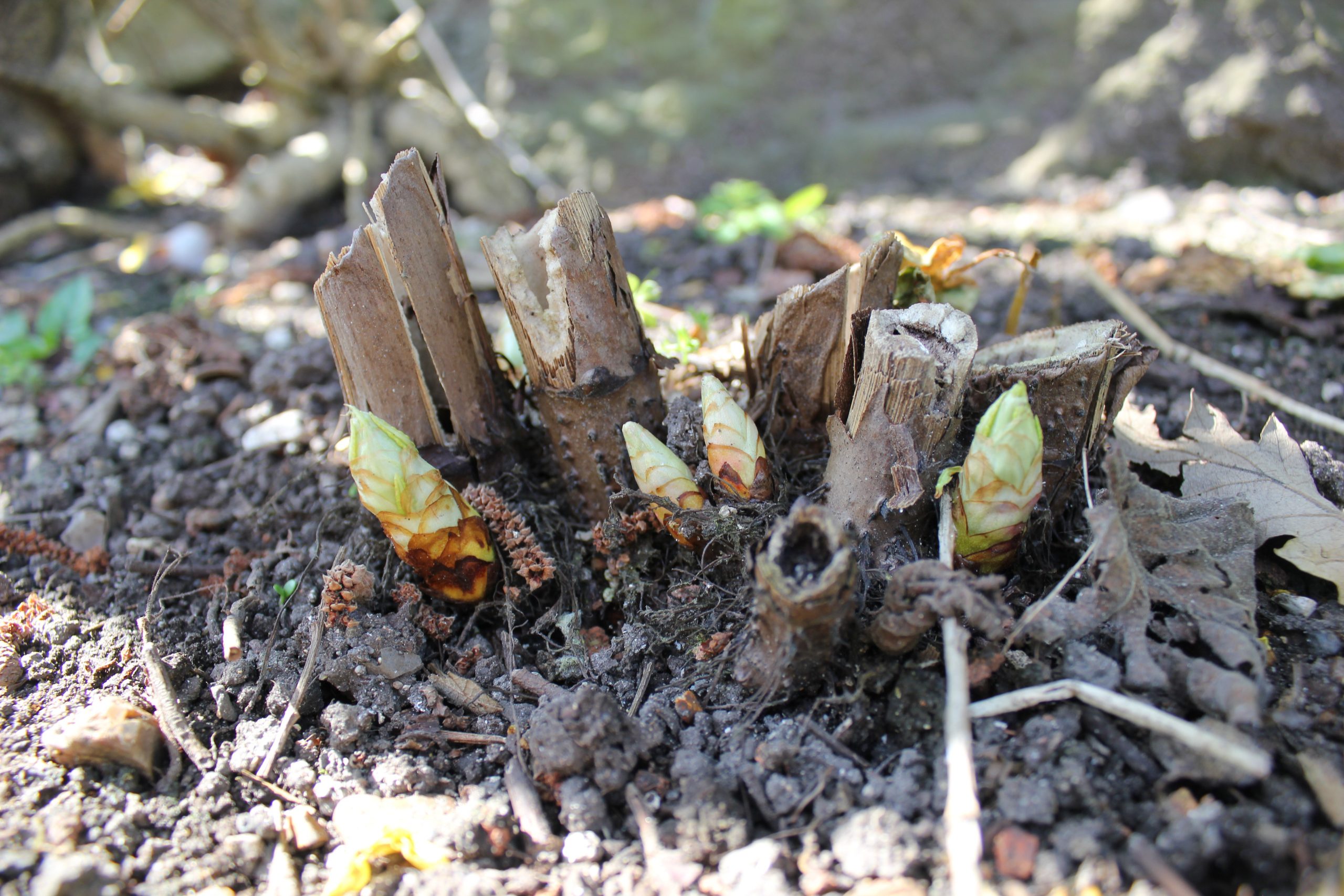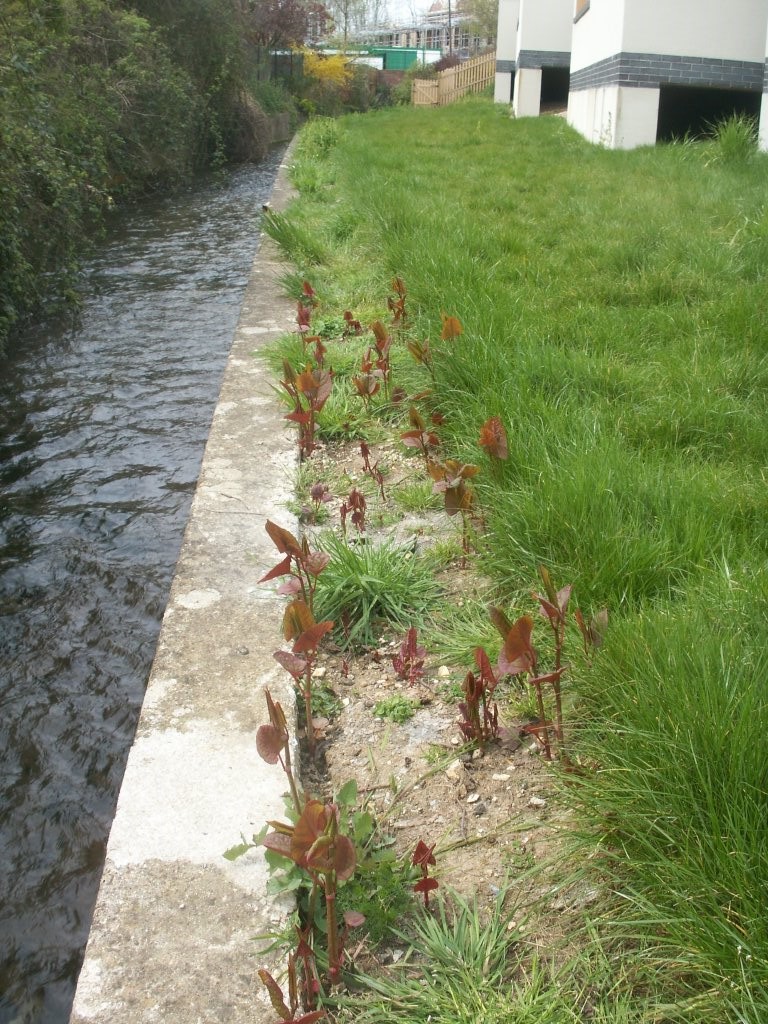This is a great question, you’ll find out why in this article.
Japanese knotweed is a voraciously growing invasive plant. Well known for its potential to spread onto neighbouring property, this plant is an issue across the UK, but how and why does Japanese knotweed grow so fast and what causes knotweed to spread? We explain how knotweed grows, which parts of the knotweed plant create rapid spread and how easily it can be transported by humans, water and general ground disturbance.
How does Japanese knotweed grow so fast?
Japanese knotweed is mostly identified by its green foliage sprouting from red specked stems along each branch that grow in a characteristic zig-zag pattern, and flowers that appear in summer. Later in the year the leaves fall and the hollow stems turn into brown, brittle canes.
But it’s below ground you’ll find the reason for knotweed’s ability to spread. The roots (rhizomes) are an underground system that extend up to 7 meters laterally and up to 2 metres down, with new plants emerging above ground along the roots. The rhizomes stem from what’s known as a knotweed crown, this is the core or the reproduction centre of the plant. Both crown and rhizomes are nutrients stores that feed the plant and from which new growth emerges each year.
Below we can see that rhizomes are tough solid wood like structures with a bright orange centre, they can be snapped like a carrot – unlike the stems that grow from these roots which are hollow and fleshy in summer turning hollow and brittle in winter.

And here we can see an old crown with the remains of the winter canes (showing their hollow structure) and fresh new shoots appearing much like asparagus tips emerging from the crown. Each shoot grows from nodes along the rhizome.

What causes Japanese Knotweed to spread?
There are three main activities that cause knotweed to spread:
1. Ground disturbance
If any part of the rhizome breaks away (though disturbance for instance) it will grow a new plant. This is what makes this plant such a survivor. In fact, the more it’s broken the more voraciously it will grow. This is why we always advise to leave the plant alone and do not disturb the ground around knotweed, as it will make the problem a bigger one to resolve. Activities such as mowing, flailing and digging will disturb the rhizome allowing for any fragments to be dislodged and find a new home further afield.
The other reason knotweed spreads so easily is because of its ability to remain dormant for several years then spring back to life. This often happens on construction or development sites where dormant rhizomes are disturbed prompting the underground roots to regenerate and produce new above ground shoots.
2. Climate conditions
Wet weather conditions often cause flooding which in turn encourages ground erosion. This being another form of disturbance that can easily fragment underground rhizomes and any running water then being a transport system for the fragments to be carried further afield to form new plants. In this picture we can see new growth emerging on the side of a river bank.

3. Illegal disposal
It could be tempting to just throw knotweed away – fly-tip it in the countryside, put it into a green waste bin, add it to a compost heap, or take it to a general municipal landfill site. But this is illegal activity, because knotweed is classed as noxious waste and as such is required by law to be disposed of by a licensed contractor in a landfill site licensed to receive it.
Summing up
So it’s clear that knotweed is built for growth, it is inherently robust in its structure, and hard to control or dispose of. It’s time to call in the professionals if you think (or know) you have knotweed. Don’t delay and do not ignore knotweed. Contact the team below for more advice or to get a survey booked in.



